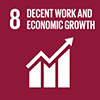Description/achievement of initiative
After Master Plan for Curitiba was adopted in 1968, Brazilian Curitiba city has implemented several innovative systems to create jobs, improve public transportation accessibility, promote housing development, and improve waste management.
Source: World Resources Institute (2011) A Compilation of Green Economy Policies, Programs, and Initiatives from Around the World. The Green Economy in Practice: Interactive Workshop 1, February 11th, 2011
Curitiba, located in Parana State, Brazil, has implemented several innovative systems to create jobs, improve public transportation accessibility, promote housing development, and improve waste management. The city has integrated a "radial linear-branching pattern" to protect density by diverting traffic from the city center and protect green areas by encouraging industrial development along radial axes. Curitiba has initiated a Bus Rapid Transit System and established the Curitiba Industrial City (CIC) on the city's west side which has strict environmental regulations and does not allow "polluting" industries.
The benefits of the systems are as follows:
- Reduced transportation time: the per capita income loss due to severe congestion is ~11 and 7 times lower than in Sao Paulo and Rio de Janeiro, respectively;
- The creation of the CIC has created about 50,000 direct jobs and 150,000 indirect jobs, and about 20% of the state's exports are from the CIC;
- Curitiba's fuel usage is 3% lower than in Brazil's other major cities;
- Improved outdoor air quality and associated health benefits;
- 70% of the city's residents are actively recycling and 13% of solid waste is recycled;
- Property values of neighboring areas has appreciated, and tax revenues have increased;
- Reduced flood mitigation expenditures by promotion of park development in flood-prone areas (the cost of this strategy is estimated to be 5% lower than building concrete canals).
Implementation methodologies
Arrangements for Capacity-Building and Technology Transfer
Coordination mechanisms/governance structure
Partner(s)

